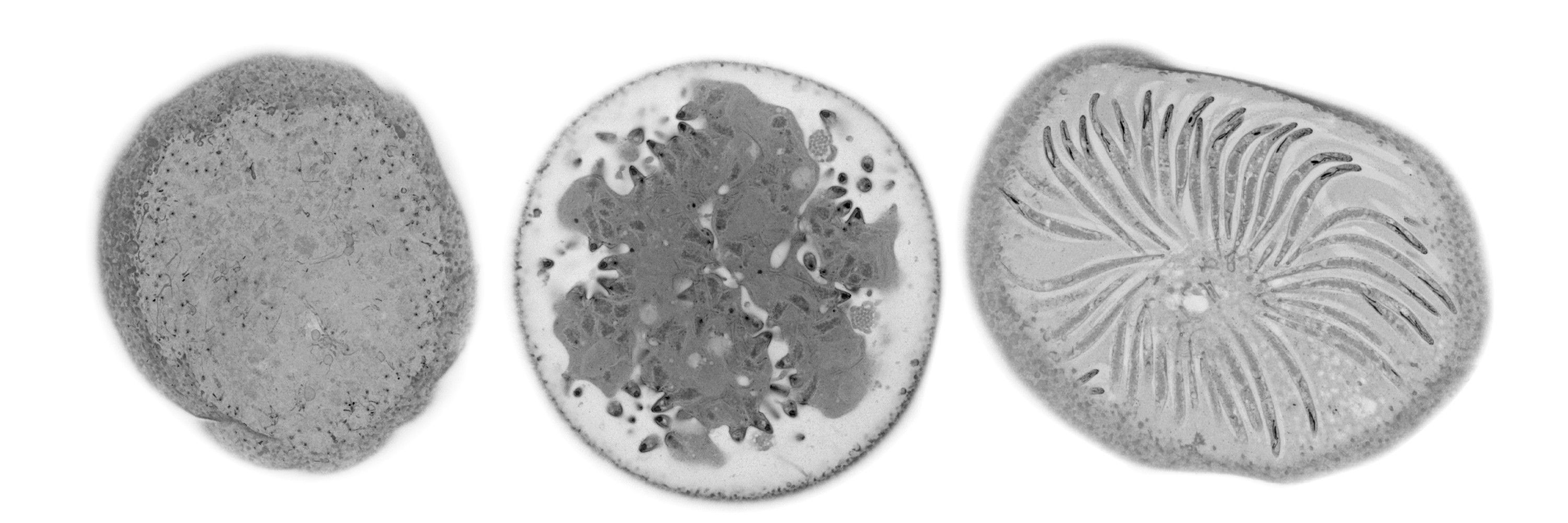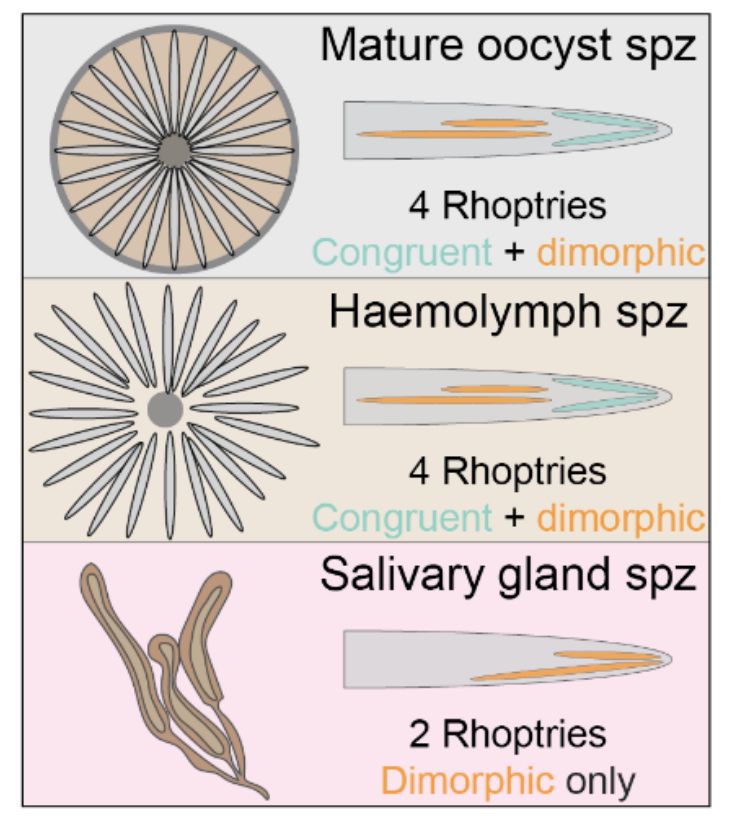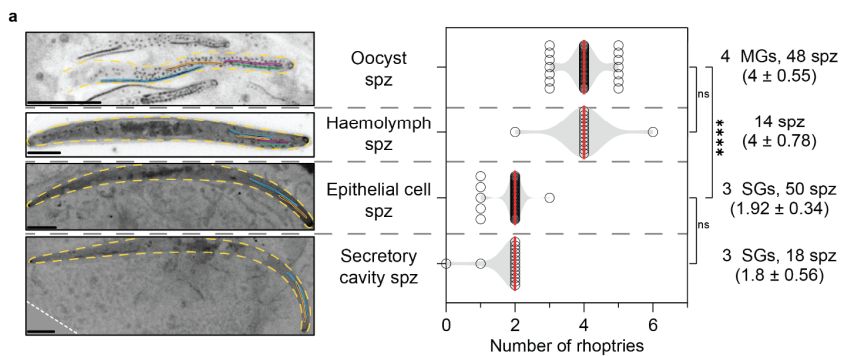
Ben Liffner
@benliffner.bsky.social
Microbiology nerd 🤓.
Future Making Fellow @ The University of Adelaide🦠.
Studying parasite cell biology using microscopy🔬🦟🧫.
Future Making Fellow @ The University of Adelaide🦠.
Studying parasite cell biology using microscopy🔬🦟🧫.
Thanks very much for having me, and coming along!
May 28, 2025 at 7:57 AM
Thanks very much for having me, and coming along!
How i feel when I get to look at expanded midguts or salivary glands
April 12, 2025 at 2:55 PM
How i feel when I get to look at expanded midguts or salivary glands
A shoutout to @freddyfrischknecht.bsky.social who has helped me out with my many sporozoite biology queries over the last few years, and likely unknowingly inspired me to find out how many rhoptries a sporozoite has from an email about 6 years ago
April 12, 2025 at 11:28 AM
A shoutout to @freddyfrischknecht.bsky.social who has helped me out with my many sporozoite biology queries over the last few years, and likely unknowingly inspired me to find out how many rhoptries a sporozoite has from an email about 6 years ago
A huge thanks to all my co-authors in this study and a special thanks to @sabsalon.bsky.social for letting me loose on a project that initially had nothing to do with what we were previously working on, but has now greatly shaped our research directions!
April 12, 2025 at 11:28 AM
A huge thanks to all my co-authors in this study and a special thanks to @sabsalon.bsky.social for letting me loose on a project that initially had nothing to do with what we were previously working on, but has now greatly shaped our research directions!
There are plenty of other interesting tidbits and findings in this study, and after peer review we will make all the imaging data available on an online database so anybody can look through the images themselves!
April 12, 2025 at 11:28 AM
There are plenty of other interesting tidbits and findings in this study, and after peer review we will make all the imaging data available on an online database so anybody can look through the images themselves!
For the small number of RON11 knockdown parasites that make it to the salivary gland, we found they accumulate in the space between epithelial cells but almost never actually invade or get into the secretory cavity. This interesting observation explains why these parasites are not transmissible!

April 12, 2025 at 11:28 AM
For the small number of RON11 knockdown parasites that make it to the salivary gland, we found they accumulate in the space between epithelial cells but almost never actually invade or get into the secretory cavity. This interesting observation explains why these parasites are not transmissible!
More important though, these RON11 knockdown sporozoites only made half the number of rhoptries. And when we looked at the small number of sporozoites that made it to the salivary gland, many of them had no rhoptries at all!

April 12, 2025 at 11:28 AM
More important though, these RON11 knockdown sporozoites only made half the number of rhoptries. And when we looked at the small number of sporozoites that made it to the salivary gland, many of them had no rhoptries at all!
Looking at these RON11 knockdown parasites, we saw that late in their rhoptry biogenesis, most of them had aberrant looking rhoptries.

April 12, 2025 at 11:28 AM
Looking at these RON11 knockdown parasites, we saw that late in their rhoptry biogenesis, most of them had aberrant looking rhoptries.
We knew RON11 was also expressed in sporozoites and that its knockdown inhibited salivary gland invasion from a previous study, and we were lucky enough to get access to this parasite line produced by Tomoko Ishino's group
www.sciencedirect.com/science/arti...
www.sciencedirect.com/science/arti...

Rhoptry neck protein 11 has crucial roles during malaria parasite sporozoite invasion of salivary glands and hepatocytes
The malaria parasite sporozoite sequentially invades mosquito salivary glands and mammalian hepatocytes; and is the Plasmodium lifecycle infective for…
www.sciencedirect.com
April 12, 2025 at 11:28 AM
We knew RON11 was also expressed in sporozoites and that its knockdown inhibited salivary gland invasion from a previous study, and we were lucky enough to get access to this parasite line produced by Tomoko Ishino's group
www.sciencedirect.com/science/arti...
www.sciencedirect.com/science/arti...
We wanted to put this new knowledge of rhoptry biology to the test by looking at what happens when we knockdown a rhoptry protein, but which to choose? Recently, a study of the protein RON11 showed that knockdown of this protein led to merozoites with 1 rhoptry
journals.plos.org/plosbiology/...
journals.plos.org/plosbiology/...
journals.plos.org
April 12, 2025 at 11:28 AM
We wanted to put this new knowledge of rhoptry biology to the test by looking at what happens when we knockdown a rhoptry protein, but which to choose? Recently, a study of the protein RON11 showed that knockdown of this protein led to merozoites with 1 rhoptry
journals.plos.org/plosbiology/...
journals.plos.org/plosbiology/...
This led us to the hypothesis that sporozoites have two pairs of rhoptries that are specialised for each of their invasion events: the salivary gland and hepatocytes
April 12, 2025 at 11:28 AM
This led us to the hypothesis that sporozoites have two pairs of rhoptries that are specialised for each of their invasion events: the salivary gland and hepatocytes
One unexpected observation was that of the usually 2 pairs of rhoptries in oocyst sporozoites, they were morphologically distinguishable. We called these the dimorphic (different size) and congruent (same size) rhoptry pairs, with the congruent rhoptries specifically used up during SG invasion.

April 12, 2025 at 11:28 AM
One unexpected observation was that of the usually 2 pairs of rhoptries in oocyst sporozoites, they were morphologically distinguishable. We called these the dimorphic (different size) and congruent (same size) rhoptry pairs, with the congruent rhoptries specifically used up during SG invasion.
Wanting to follow the fate of rhoptries through the invasion of sporozoites into the mosquito salivary gland, we could differentiate sporozoites at different stages of this process. Excitingly, we could see that sporozoites use up two rhoptries during salivary gland epithelial cell invasion!

April 12, 2025 at 11:28 AM
Wanting to follow the fate of rhoptries through the invasion of sporozoites into the mosquito salivary gland, we could differentiate sporozoites at different stages of this process. Excitingly, we could see that sporozoites use up two rhoptries during salivary gland epithelial cell invasion!
We then put the segmentation score to the test, using it to develop a timeline for the biogenesis of rhoptries in forming sporozoites!

April 12, 2025 at 11:28 AM
We then put the segmentation score to the test, using it to develop a timeline for the biogenesis of rhoptries in forming sporozoites!
In the past, oocyst size was used a proxy for development, but one sporozoite formation started, we saw no real correlation with developmental stage and oocyst size. Instead we developed what we call the segmentation score, using progress through cytokinesis as a way to assess sporozoite development

April 12, 2025 at 11:28 AM
In the past, oocyst size was used a proxy for development, but one sporozoite formation started, we saw no real correlation with developmental stage and oocyst size. Instead we developed what we call the segmentation score, using progress through cytokinesis as a way to assess sporozoite development

